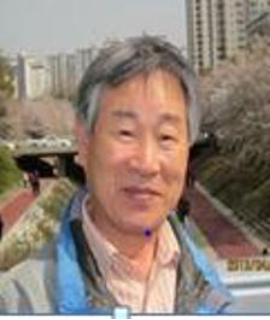Title : Effect of silicate-coated rice seed on bakanae disease (Gibberella fujikuroi) reduction in the rice cultivation
Abstract:
Crop seeds are often coated with either chemicals or fertilizers to reduce the production cost. So far, to protect bird damage in direct wet seeding rice paddies, seed lot was coated either with Iron or Ocher mud soil. Our R&D team investigated the effect of silicate-coated rice seeds (SCS) on the reduction of bakanae epidemics and the rice growth performance in direct wet seeded paddy field and also in raising seedlings boxes for mechanical transplanting as well. We developed SCS to protect and to apply the silicate fertilizer as follows. Naturally infested rice seed lots not previously subjected to any fungicidal treatment were dressed with a mixture of 25% silicic acid at pH-11 and 300-mesh zeolite powder at a ratio of 50 g dry seed : 9 mL silicic acid : 25 g zeolite powder. In direct wet seeding blocks, uniform scattering of rice seeds on the soil surface with better seedling establishment were observed in SCS plots. As of heading stage, the infection rate was the highest by 9.9% in the non-SCS control. While in SCS plots, the infection rate was limited to below 0.01%. The viability of the bakanae fungal conidia in the SCS and non-SCS seed lots previously inoculated with panicles of infected plants from experimental field plots was assessed in the incubator. In the non-SCS control, pinkish colonies were observed to recover on the panicle grain of infected plants where mycelium, macro- and micro-conidia were developed actively in interior of infected grain. While in the SCS plots there was no sign of pathogen survival in vivo. In seedling boxes, seedlings emerged 2-3 days earlier for the SCS than they did for the non-SCS control and damping-off and bakanae disease incidence were remarkably reduced. Specifically, bakanae disease incidence in the SCS was limited to only 7.8% for 80 days after sowing, as compared to 91.6% of the non-SCS control. For the 45-days-old SCS nursery seedlings, the fresh weight was increased by 11% in healthy plants and was two times heavier in the infected plants, with only mild damage compared to that observed for the non-SCS. Even after transplanting, SCS treatment contributed to a lower incidence of further infections and possibly to recovery of the seedlings to normal growth as compared to that observed in symptomatic plants. The active pathogenic macro-conidia and micro-conidia were considerably fewer in the soil, root, and seedling tissue of the SCS. In particular, the abnormality of macro-conidia with thick-walled, straight oblong shape, devoid of septum were retrieved in the SCS tissue; which is likely to be a comparative etiological disadvantage, compared to that of typical active macro-conidia, which are slightly sickle-shaped with 5-7 intact septa in non-SCS tissue. Active intact conidia with high inoculum potential were rarely observed in the tissue of the seedlings treated only in the SCS. We propose that promising result was achieved most likely via inhibition of the development of intact conidia, in concert with the aerobic, acidic conditions induced by the physiochemical characteristics associated with the air porosity of zeolite, alkalinity of silicate and the seed husk as a carbon source. In addition, the resistance of the healthy plants to pathogenic conidia was also an important factor. Therefore, it was concluded that the application of silicate coated seed (SCS) would be a feasible alternative to prevent the bakanae disease.
Keywords: silicate-coated rice seed (SCS), bakanae disease, direct wet seeding, raising seedling



